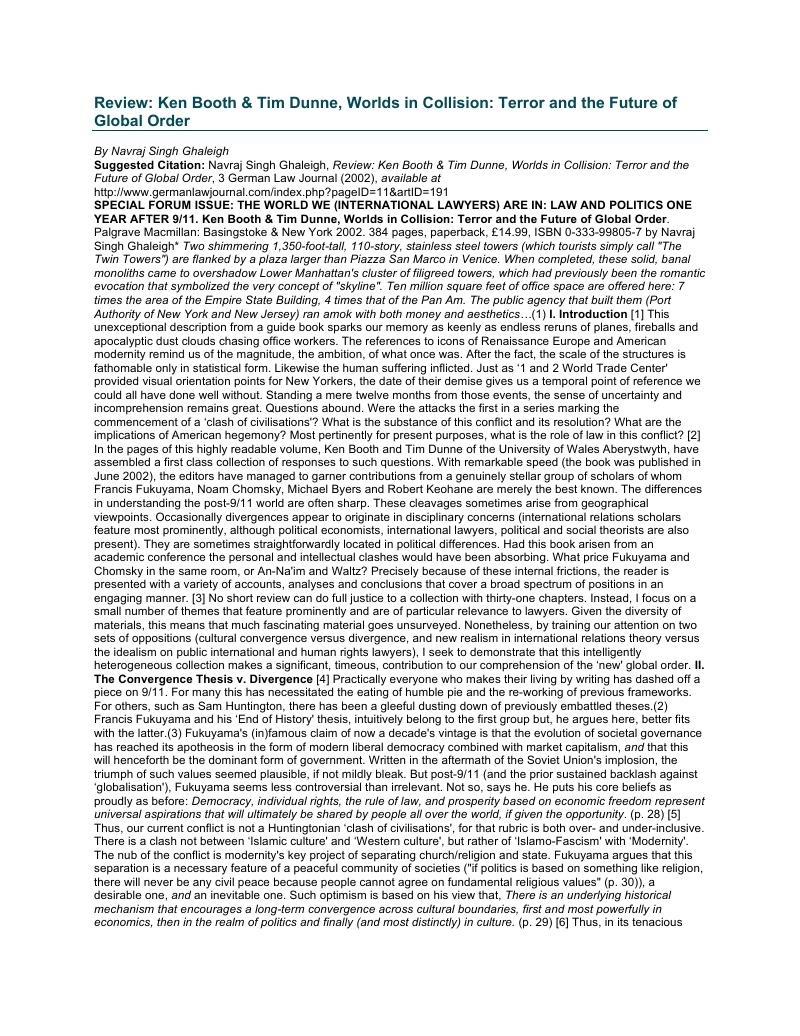Gray cites the USA's December
2001 withdrawal from the Anti-Ballistic Missile Treaty, claiming that it was a “legal” move – meaning that it was consistent with the norms of public international law. This is far from obvious however. Indeed it is a highly contested matter, turning on whether there has been a “fundamental change of interests” which, according to the Vienna Convention on the Law of Treaties [1961], would permit a withdrawal from treaty obligations. Given his own view as to the somewhat marginal import of 9/11, that would presumably not suffice as a “fundamental change of interests”.
Google Scholar